

Last updated on

2023 saw notable transformations in the field of search, with significant progress made in search engine algorithms, the integration of artificial intelligence, and improvements in user experience.
Understanding the inner workings of each search engine goes beyond just having theoretical knowledge; it’s a strategic necessity for those seeking to boost their website’s visibility and attract more traffic.
This article offers a comprehensive overview of the seven dominant search engines in the market, providing valuable insights into the latest AI developments shaping the search landscape.
Furthermore, the article includes carefully selected links to top resources and articles, offering effective strategies for marketing to and monetizing these platforms.
This comprehensive approach ensures that readers acquire a deep understanding of the current state of search engines and how to harness their potential in the constantly evolving realm of digital marketing.
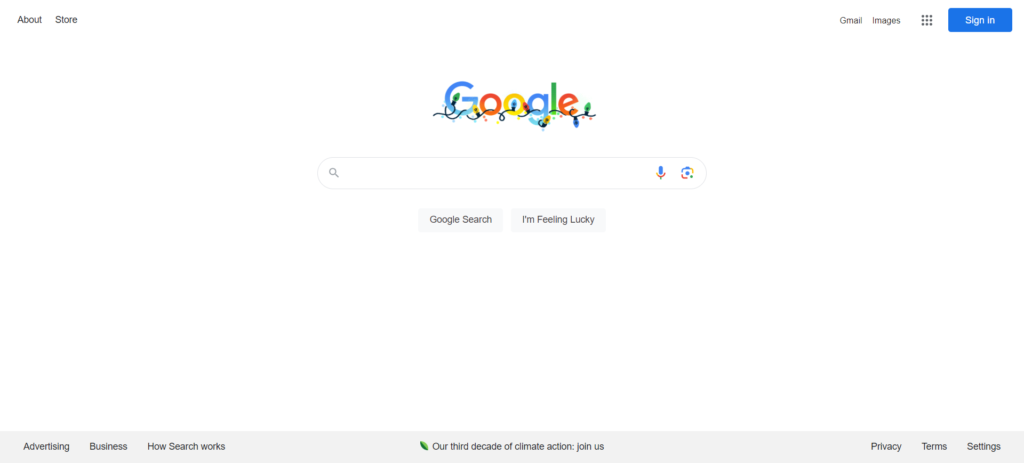
Google, with a staggering 81.74% of the search market share, hardly requires an introduction. However, it is imperative to place it at the forefront of any list of search engines.
Sergey Brin and Larry Page initiated Google as a research project in 1996, and in 1999, they attempted to sell their search engine to Excite for an impressive $750,000. Unfortunately, this offer was declined, making it one of the most regrettable business decisions in history.
As of the current date, Google’s parent company, Alphabet, boasts a staggering valuation of approximately $1.764 trillion.
In addition to fueling its own search results, Google also supplies search results for various other engines, including the long-standing favorite, Ask.com.
Pros & Cons
The major allure of achieving high rankings on Google lies in the enormous potential for web traffic.
On the flip side, the downside is the fierce competition for this traffic, making organic search ranking on Google highly competitive and paid search advertising often significantly more costly compared to other platforms.
Furthermore, many argue that Google is steering users away from clicking through to external websites and towards fulfilling their information needs directly on the Google platform through SERP features such as:
This shift in user behavior can make competition more expensive and offer a potentially reduced reward for marketers.
Moreover, the recent introduction of Google’s Search Generative Experience (SGE) is expected to pose additional challenges for marketers. SGE uses artificial intelligence to generate content and answers directly within search results, potentially including synthesized text or composited images in response to specific queries, thus creating a more interactive and dynamic search experience.
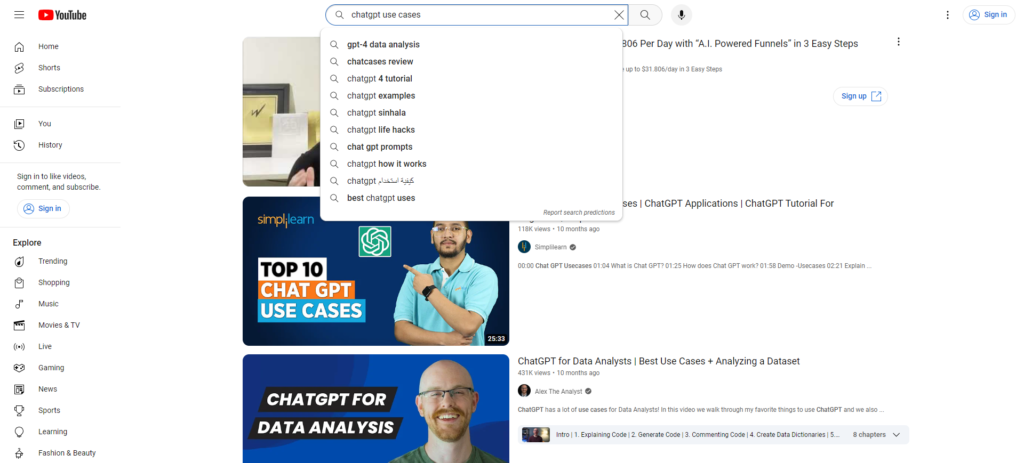
YouTube was established in 2005 by individuals with prior experience at PayPal and was acquired a little over a year later by none other than Google, solidifying Google’s control over the top two search engines in this lineup.
YouTube stands as the second-largest search engine globally, boasting a user base of over 2.5 billion logged-in users every month, with users collectively watching more than 1 billion hours of video on the platform daily.
For those curious about the platform’s first-ever video upload, which has amassed over 300 million views, it’s a 19-second clip featuring co-founder Jawed Karim at the zoo. While not quite on the scale of MTV playing “Video Killed The Radio Star,” it certainly served its purpose.
Pros & Cons
Much like Google, the appeal of tapping into such a massive traffic source on YouTube is evident, but it also poses certain challenges for marketers.
Leveraging YouTube as a traffic-generating platform can have a profound impact if executed successfully.
However, given that more than 500 hours of video content are uploaded to YouTube every single minute, standing out from the crowd can be quite daunting.
Moreover, participating in paid advertising opportunities through the Google Ads system can become expensive and competitive.
That being said, if you manage to capture the attention of your target audience on YouTube with remarkable campaigns similar to those by figures like MrBeast or Blendtec, the exposure you can gain is nothing short of incredible.
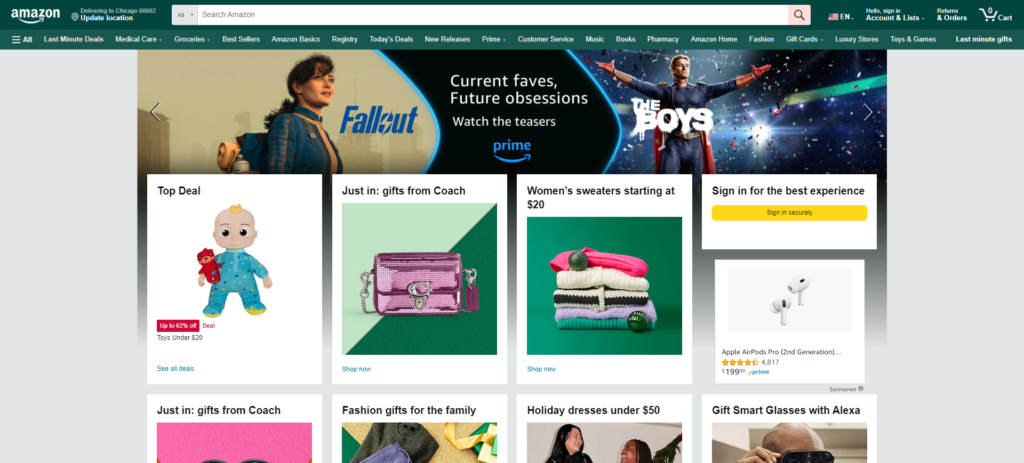
Amazon made its debut in 1995 and is recognized as one of the pioneering companies in the field of online retail.
Initially, it began its operations by selling books online but quickly expanded its offerings. In 1999, founder Jeff Bezos was honored as Time’s Person of the Year for popularizing and making online shopping accessible.
Amazon’s success is so significant that nearly half of all online shopping searches originate not from Google (31%) but from Amazon (50%). Amazon’s A9 algorithm is specifically designed for e-commerce, focusing on identifying purchase intent and user behavior.
Amazon’s acquisition of Cloostermans, a leader in supply chain mechatronics, has substantially bolstered its warehouse automation capabilities. Combined with the acquisition of iRobot, a robotics company, this indicates that we can anticipate further expansion and influence from the company in the future.
Pros & Cons
The primary advantage, much like with Google, is the sheer scale of Amazon’s reach.
If you’re in the business of selling blue widgets and want to be where people search for them, being present on Amazon is crucial.
In fact, some argue that, based on statistics, having a wealth of valuable and relevant content may assist you in ranking on Google and attracting users researching blue widgets and their options. However, without a presence on Amazon, you may miss out when those users are ready to make a purchase.
The drawback lies in the intense competition, the ease of comparing prices and product details against competing products, and the potentially high costs associated with selling on Amazon.
It can be challenging to communicate your unique value proposition in a product-centric system. Developments such as Amazon’s decision to reduce affiliate payouts introduce additional hurdles.
Entering the platform early can be challenging if you lack a unique product, as sales and reviews play a significant role in rankings.
For this reason, well-established companies with excellent products and reputations tend to maintain their positions effectively.
There are also Cost-Per-Click (CPC) options for promoting products, which can be expensive, but you’re also reaching searchers at the end of the buying cycle, making it a valuable investment.
The impact of Amazon’s voice assistant, Alexa, on searches and sales is an area worth monitoring.
To prepare for a potential scenario where Amazon becomes a dominant player (or at least performs well) in the personal assistant market, the third article below provides further insights.
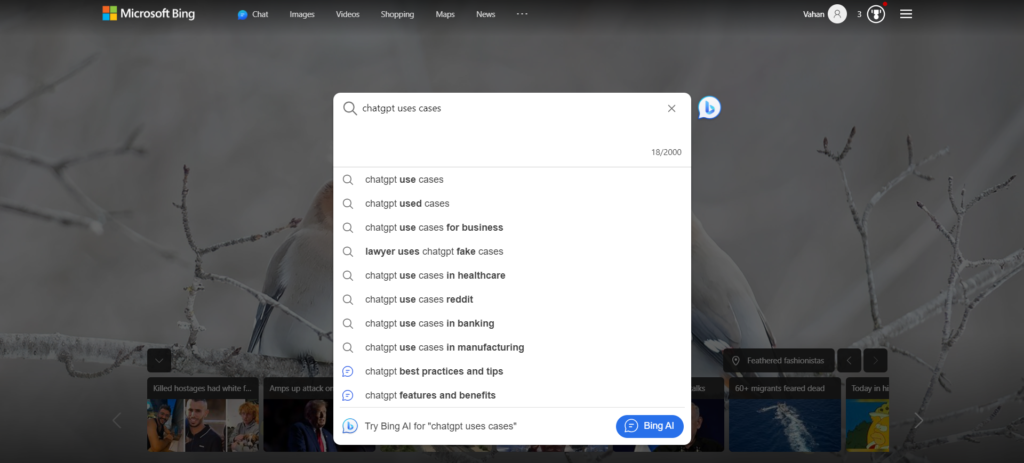
Bing was introduced by Microsoft in 2009 as its response to Google, taking the place of MSN Search. Currently, it holds a 3.38% share of the global search market and a 7.73% share in the United States.
Bing has recently made substantial strides in its development, notably with the introduction and evolution of Bing Chat, which has been renamed Copilot. This feature allows users to engage in conversational interactions with the search engine, posing questions and receiving responses in a more interactive format.
In an effort to catch up with Google, Bing has been actively focusing on advertising, adding various features to Microsoft Ads and launching pubCenter, a counterpart to Google AdSense. These endeavors aim to align Bing’s system more closely with Google’s for ease of import and familiarity for campaign managers.
Pros & Cons
While Microsoft’s Bing has showcased innovation with AI chat capabilities and offers distinctive features, its market share growth is constrained by Google’s dominant position.
One of the key factors affecting Bing’s market standing is the browser ecosystem. Google Chrome, being the most widely used web browser globally with a 64% market share, naturally directs users toward Google Search.
Safari, the default browser on Apple devices, also plays a role in Bing’s market challenges. As Safari comes pre-configured with Google as its default search engine, the majority of Apple device users are inclined to use Google Search.
Although Microsoft Bing may not possess the same market share as Google, it does hold a respectable position in many markets, including the US and the UK.
In terms of organic search, its algorithms are not as intricate as Google’s. This simplicity makes them easier to comprehend, predict, and optimize for. While this situation may not persist indefinitely, it is likely to remain true in the short term.
Due to lower traffic volume, fewer SEO professionals compete for the top 10 positions and study the algorithms, offering a good return on investment for those who do.
On the advertising front, the systems are less complex. Due to the lower volume and the ease of adapting existing Google Ads campaigns, the lower cost per click (CPC) can compensate for the reduced traffic. However, it’s worth noting that Bing’s understanding of close variants can be subpar and potentially costly. Despite this, the return on investment (ROI) often proves to be more favorable on Microsoft Bing, even though the number of conversions may be lower.
Please note that this doesn’t imply merely copying your Google Ads campaigns into Microsoft Ads and considering the job done. Each search engine should be managed individually, accounting for differences in CPC, demographics, and resulting conversion rates. Nevertheless, duplicating campaigns can significantly expedite the setup process.
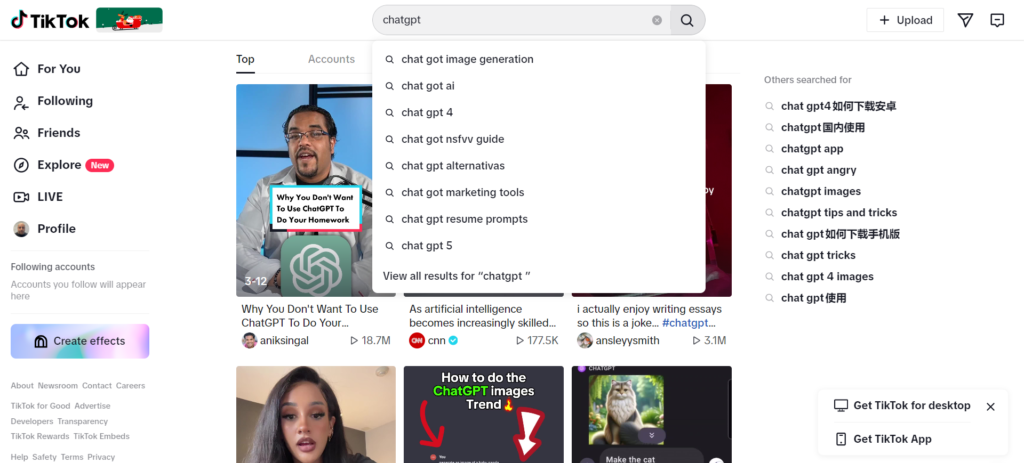
TikTok, boasting a user base of over 1.6 billion people worldwide, is increasingly being employed as a search engine, especially by the growing number of Generation Z individuals who now turn to TikTok for their search requirements.
It stands out as the leading social media platform in terms of the time users spend using it.
Statistics reveal that, on average, global users with Android devices allocate roughly 31.5 hours each month to browsing and engaging on TikTok.
On a global scale, users are not only using TikTok for entertainment but also for seeking information and making discoveries, challenging the traditional dominance of search engines such as Google.
Pros & Cons
TikTok’s evolution into a search engine is marked by its high user engagement, as its visually captivating and trend-oriented content particularly resonates with younger demographics.
Its ability to adapt to current trends enables TikTok to provide timely and pertinent information.
However, the platform faces challenges concerning the reliability and depth of information available, as its search algorithms are less transparent compared to those of traditional search engines like Google.
Furthermore, while TikTok’s advertising capabilities are engaging, they may not match the advanced targeting and analytics offered by Google’s well-established advertising system.
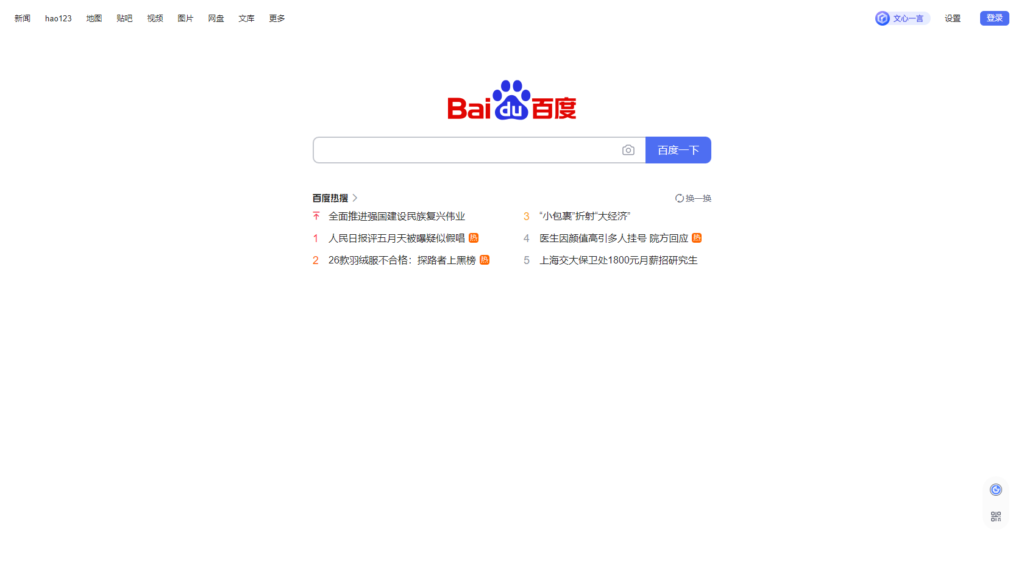
Baidu was established in the year 2000 and is the dominant search engine in China, boasting an impressive market share of over 66.52%. In comparison, Google holds a mere 2.34%, and Bing stands at 13.42% in the Chinese market.
A significant milestone in Baidu’s journey with artificial intelligence occurred at the WAVE SUMMIT 2023, where it announced significant enhancements to ERNIE Bot. ERNIE Bot is its knowledge-enhanced large language model (LLM), and it currently serves a user base of 100 million.
However, beyond China, Baidu’s influence is limited. Within the country, Baidu facilitates a staggering 3.3 billion searches every day.
Pros & Cons
The drawback with Baidu is that it provides access to only one market. The advantage, though, is that this market is exceptionally vast.
It is essential to recognize that entering the Chinese market is distinct from entering any other market (hence the challenges of international SEO).
The visual elements, language, and cultural norms differ significantly from other markets, and relying solely on Google Translate is unlikely to win you any customers.
To tap into the Chinese market through Baidu, it’s crucial to have someone on your team who not only speaks the language but also comprehends the intricacies of marketing within that culture (not just “someone on my team who took two years of Mandarin in high school”).
In general, Baidu’s organic algorithms are less complex compared to Google’s, and its paid advertising systems can be relatively straightforward once you are set up. However, the initial setup can be more challenging, particularly if you are located outside of China.
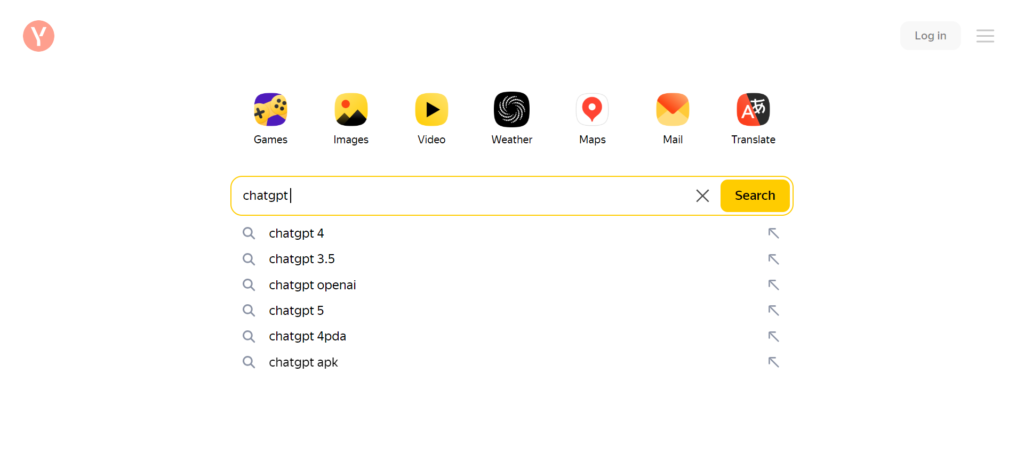
Yandex has its origins in a project initiated by two Russian developers with the goal of assisting in the categorization of patents in 1990 under the company Arkadia.
The term “Yandex” was adopted in 1993, representing “Yet Another iNDEXer.” The domain Yandex.ru was launched in 1997. Currently, Yandex accounts for approximately 69.79% of all searches in Russia and 1.78% globally.
On January 27, 2023, approximately 44GB of Yandex’s source code was leaked, providing an unprecedented insight into the inner workings of the search engine, including a comprehensive view of its algorithmic structure and over 17,800 ranking factors employed by Yandex for website ranking in search results.
Pros & Cons
Similar to many smaller search engines compared to Google, Yandex experiences lower traffic volume, but it also entails lower competition, both in organic search and paid advertising.
The algorithms utilized by Yandex are less intricate than Google’s and are well-documented, making them easier to analyze and optimize for.
However, there’s a downside: While Yandex’s algorithms may be less sophisticated than Google’s, they have certain elements that pose challenges for external entities, including a greater emphasis on geolocation.
In terms of paid advertising, Yandex offers more flexibility in this regard, and compared to Google, Facebook, and Microsoft Bing, it generally involves lower costs per click.
For instance, achieving the top ranking for the keyword “casino” might cost over $55 per click in the US but only $0.82 on Yandex. Even for the Russian equivalent “казино,” the cost per click is just $1.54.
In conclusion, comprehending the intricacies of various search engines is crucial for crafting successful digital marketing and SEO strategies.
Platforms such as YouTube and TikTok are reshaping the definition of online search, moving beyond traditional text-based queries and embracing multimedia content.
On the other hand, engines like Baidu and Yandex cater specifically to distinct regional markets, offering tailored features.
As technology continues to advance and user behavior evolves, the landscape of online search and advertising will undergo further changes.
Marketers and SEO professionals need to stay informed and adaptable to effectively harness the potential of these platforms.
For those interested in delving deeper into this topic, our article on Google alternatives provides a broader perspective on the diverse array of search engines available, delivering valuable insights for individuals seeking to broaden their horizons in digital marketing.
Original news from SearchEngineLand